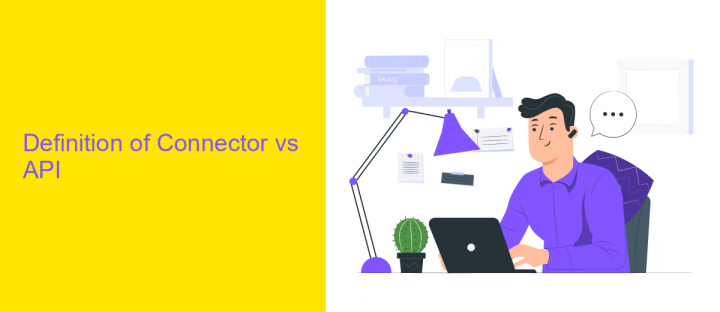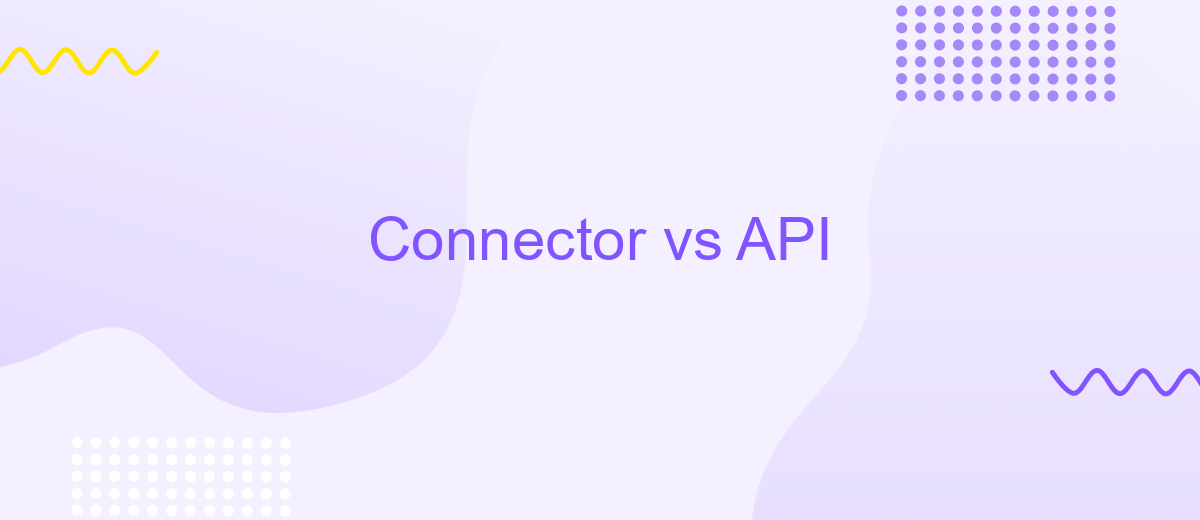Connector vs API
In the rapidly evolving digital landscape, businesses and developers are often faced with the challenge of integrating various software systems to streamline operations and enhance functionality. Two prominent solutions that facilitate these integrations are connectors and APIs. While both serve to bridge disparate systems, they operate differently and offer unique advantages. This article explores the distinctions between connectors and APIs, helping you choose the right tool for your integration needs.
Introduction
In the realm of software development, the terms "Connector" and "API" often emerge as pivotal components for enabling seamless communication between different systems. While both serve the purpose of facilitating data exchange, they operate in distinct ways and cater to different needs. Understanding their unique characteristics is essential for developers and businesses to make informed decisions when integrating various software solutions.
- Connectors: These are pre-built integrations that allow applications to communicate with each other without extensive coding. They are often easier to implement but may offer limited customization.
- APIs (Application Programming Interfaces): APIs provide a set of rules and protocols for building and interacting with software applications. They offer greater flexibility and customization, allowing developers to create tailored solutions.
Choosing between a connector and an API depends on several factors, including the complexity of the integration, the level of customization required, and the resources available for development. By evaluating these aspects, businesses can select the most suitable option to enhance their operational efficiency and achieve their technological goals.
Definition of Connector vs API

In the realm of software integration, connectors and APIs serve as pivotal components, each with distinct roles. A connector is a specialized tool or interface designed to facilitate communication between different systems or applications. It acts as a bridge, enabling data transfer and interaction without requiring deep technical knowledge from the user. Connectors often come with predefined configurations, making them ideal for users seeking quick and straightforward integration solutions.
On the other hand, an API, or Application Programming Interface, provides a set of protocols and tools for building software applications. APIs offer greater flexibility and control, allowing developers to create custom integrations tailored to specific needs. While connectors simplify the integration process, APIs require more technical expertise but provide broader possibilities. Services like ApiX-Drive exemplify the use of connectors by offering a platform where users can effortlessly connect various applications, streamlining workflows without the need to delve into complex API configurations. This makes it easier for businesses to automate processes and enhance productivity.
Key Differences between Connectors and APIs

Connectors and APIs both serve as vital tools for facilitating communication between software systems, yet they differ significantly in their functions and applications. Understanding these differences is crucial for developers and businesses aiming to integrate various systems effectively.
- Functionality: APIs provide a set of protocols and tools for building software and applications, allowing different software programs to communicate. Connectors, on the other hand, are pre-built solutions that enable specific integrations between applications without extensive coding.
- Flexibility: APIs offer more flexibility as they allow developers to create custom integrations tailored to specific needs. Connectors are generally less flexible, designed for predefined tasks and often limited to specific software ecosystems.
- Complexity: Using APIs typically requires more technical expertise and development time compared to connectors, which are easier to implement due to their plug-and-play nature.
In summary, the choice between connectors and APIs depends on the specific requirements of a project. APIs are ideal for complex, custom integrations, while connectors offer a simpler, quicker solution for standard integration needs.
Advantages and Disadvantages of Connectors vs APIs

Connectors and APIs play crucial roles in software integration, yet they serve different purposes. Connectors are pre-built integrations that allow applications to communicate without extensive coding. They simplify the process of linking software systems, providing a user-friendly interface for data exchange. APIs, on the other hand, are sets of rules and protocols that enable developers to build custom integrations between different applications, offering greater flexibility and control.
Choosing between connectors and APIs depends on the specific needs of a project. Connectors are ideal for quick integrations with minimal technical expertise, while APIs are suited for complex, bespoke solutions requiring detailed customization. Each option has its own set of advantages and disadvantages.
- Connectors: Easy to implement, time-saving, limited customization, may lack advanced features.
- APIs: Highly customizable, offer extensive functionality, require technical knowledge, longer development time.
Ultimately, the choice between connectors and APIs hinges on the balance between ease of use and the need for customization. For businesses seeking rapid deployment, connectors are advantageous. However, for those requiring tailored solutions, APIs provide the necessary flexibility and depth. Understanding the trade-offs helps in making informed integration decisions.
When to Use Connectors vs APIs
When deciding between connectors and APIs, it's essential to consider the complexity and flexibility required for your integration needs. Connectors are ideal for users seeking straightforward, pre-built solutions that enable integration without extensive coding knowledge. They are user-friendly and often come with a graphical interface, making them accessible for non-developers. For instance, platforms like ApiX-Drive offer a range of connectors that simplify the process of linking various applications, allowing businesses to automate workflows efficiently without delving into the technicalities of API management.
On the other hand, APIs provide a higher level of customization and control, suitable for developers who need to create bespoke integrations tailored to specific business requirements. APIs are best used when you require advanced functionality and are equipped with the technical expertise to handle more complex coding tasks. They allow for deeper integration capabilities and can be fine-tuned to meet unique operational demands. Therefore, if your project demands significant customization and you have the necessary development resources, APIs are the preferred choice. Ultimately, the decision hinges on your technical proficiency and the specific needs of your integration project.
FAQ
What is the primary difference between a connector and an API?
When should I use a connector instead of an API?
How do connectors and APIs contribute to automation?
Can I use both connectors and APIs together?
Are there services that help with integration without coding?
Apix-Drive is a universal tool that will quickly streamline any workflow, freeing you from routine and possible financial losses. Try ApiX-Drive in action and see how useful it is for you personally. In the meantime, when you are setting up connections between systems, think about where you are investing your free time, because now you will have much more of it.

